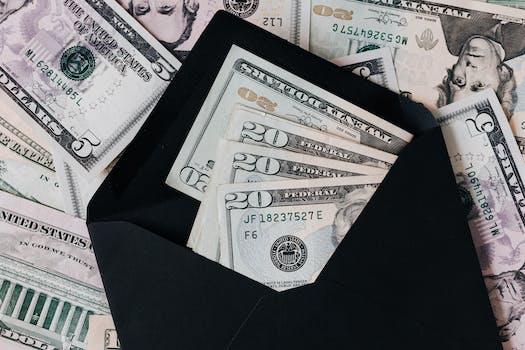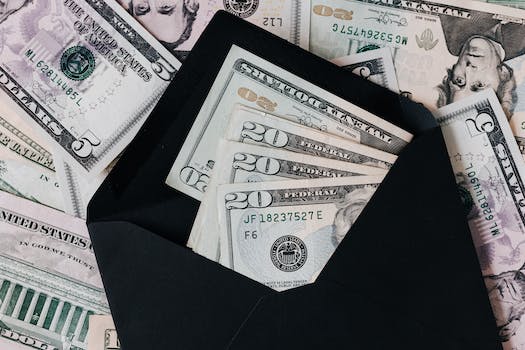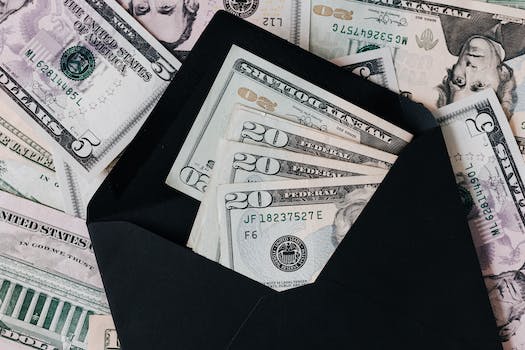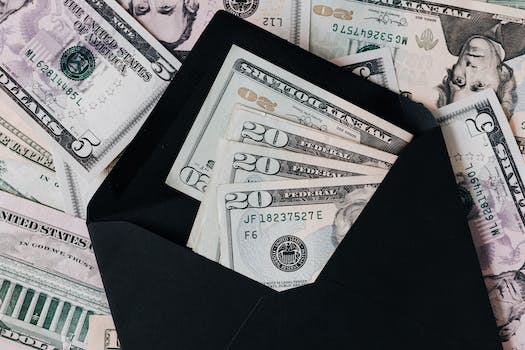How To Save Monthly Budget
“Smart tips for stretching your dollars further every month.”
Introduction
Introduction: Saving money is an essential part of financial planning. It helps you to achieve your financial goals and secure your future. One of the best ways to save money is by creating a monthly budget. A budget helps you to track your expenses and identify areas where you can cut back. In this article, we will discuss some tips on how to save your monthly budget.
10 Simple Ways to Cut Your Monthly Expenses
Are you tired of living paycheck to paycheck? Do you want to save more money each month? If so, you’re not alone. Many people struggle to make ends meet, but there are simple ways to cut your monthly expenses and save more money. Here are 10 tips to help you get started.
1. Create a budget
The first step to saving money is to create a budget. This will help you see where your money is going and where you can cut back. Start by listing all of your monthly expenses, including rent/mortgage, utilities, groceries, transportation, and entertainment. Then, compare your expenses to your income and see where you can make adjustments.
2. Cut back on eating out
Eating out can be expensive, especially if you do it frequently. Try cooking at home more often and packing your lunch for work. This can save you hundreds of dollars each month.
3. Cancel subscriptions
Do you have subscriptions to magazines, streaming services, or other monthly services? Consider canceling them if you’re not using them regularly. This can save you a significant amount of money each month.
4. Use coupons and discounts
Before making a purchase, look for coupons and discounts online. You can also sign up for loyalty programs and email newsletters to receive exclusive deals.
5. Shop around for insurance
Insurance can be a significant expense each month. Shop around for the best rates and consider bundling your policies to save even more.
6. Cut back on energy usage
Reducing your energy usage can save you money on your monthly utility bills. Turn off lights and electronics when you’re not using them, and consider using energy-efficient appliances.
7. Use public transportation
If you live in an area with public transportation, consider using it instead of driving. This can save you money on gas and car maintenance.
8. Buy generic brands
Generic brands can be just as good as name-brand products, but they’re often much cheaper. Try buying generic brands for groceries and household items to save money.
9. Cut back on alcohol and tobacco
Alcohol and tobacco can be expensive habits. Consider cutting back or quitting altogether to save money and improve your health.
10. Sell unused items
Do you have items around your home that you no longer use or need? Consider selling them online or at a garage sale. This can help you make some extra money and declutter your home.
In conclusion, there are many simple ways to cut your monthly expenses and save more money. By creating a budget, cutting back on eating out, canceling subscriptions, using coupons and discounts, shopping around for insurance, cutting back on energy usage, using public transportation, buying generic brands, cutting back on alcohol and tobacco, and selling unused items, you can start saving more money each month. Remember, every little bit counts, and even small changes can add up to significant savings over time.
Creating a Realistic Budget: Tips and Tricks
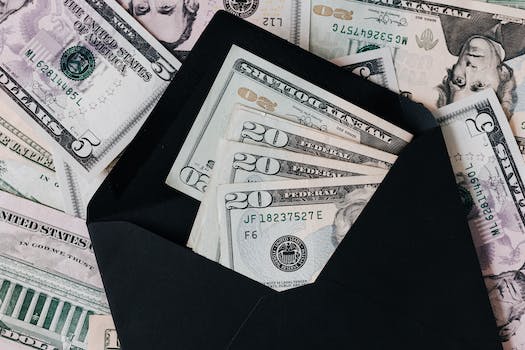
Creating a Realistic Budget: Tips and Tricks
Managing your finances can be a daunting task, especially when it comes to creating a budget. However, having a budget is essential to ensure that you are not overspending and that you are saving enough money for your future. In this article, we will discuss some tips and tricks to help you create a realistic budget that you can stick to.
1. Determine Your Income
The first step in creating a budget is to determine your income. This includes your salary, any bonuses, and any other sources of income. Once you have determined your income, you can then move on to the next step.
2. List Your Expenses
The next step is to list all of your expenses. This includes your rent or mortgage, utilities, groceries, transportation, entertainment, and any other expenses that you have. It is important to be as detailed as possible when listing your expenses so that you can get an accurate picture of where your money is going.
3. Categorize Your Expenses
Once you have listed all of your expenses, it is time to categorize them. This will help you see where you are spending the most money and where you can cut back. Some common categories include housing, transportation, food, entertainment, and savings.
4. Set Realistic Goals
Setting realistic goals is essential when creating a budget. You should set goals for both your short-term and long-term financial goals. Short-term goals may include paying off credit card debt or saving for a vacation, while long-term goals may include saving for retirement or buying a house.
5. Prioritize Your Expenses
After you have categorized your expenses and set your goals, it is time to prioritize your expenses. This means deciding which expenses are essential and which ones you can cut back on. For example, you may need to prioritize your rent or mortgage payment over going out to eat.
6. Track Your Spending
Tracking your spending is essential to sticking to your budget. You can use a spreadsheet or a budgeting app to track your expenses and see where your money is going. This will help you identify areas where you can cut back and save money.
7. Make Adjustments
Creating a budget is not a one-time event. You will need to make adjustments as your income and expenses change. For example, if you get a raise, you may want to increase your savings or pay off debt faster.
8. Be Realistic
Finally, it is important to be realistic when creating a budget. You should not set unrealistic goals or try to cut back too much too quickly. This can lead to frustration and may cause you to give up on your budget altogether.
In conclusion, creating a realistic budget is essential to managing your finances and achieving your financial goals. By following these tips and tricks, you can create a budget that works for you and helps you save money for your future. Remember to be realistic, track your spending, and make adjustments as needed. With a little effort and discipline, you can take control of your finances and achieve financial freedom.
The Benefits of Meal Planning for Saving Money
Are you tired of constantly overspending on groceries and eating out? Do you want to save money and stick to a monthly budget? One of the best ways to achieve this is through meal planning. Not only does meal planning help you save money, but it also has numerous other benefits.
Firstly, meal planning allows you to make a grocery list and stick to it. When you go to the grocery store without a plan, you are more likely to buy unnecessary items and overspend. However, when you plan your meals for the week, you can create a list of the exact ingredients you need and avoid buying anything extra. This not only saves you money but also reduces food waste.
Secondly, meal planning helps you avoid eating out. Eating out can be expensive, especially if you do it frequently. By planning your meals ahead of time, you can ensure that you have all the ingredients you need to cook at home. This not only saves you money but also allows you to control the quality and nutritional value of your meals.
Thirdly, meal planning allows you to take advantage of sales and discounts. When you plan your meals ahead of time, you can check the weekly ads and plan your meals around the items that are on sale. This can save you a significant amount of money in the long run.
Fourthly, meal planning helps you save time. When you plan your meals ahead of time, you can prepare some of the ingredients in advance, such as chopping vegetables or marinating meat. This can save you time during the week when you are busy and don’t have a lot of time to cook.
Fifthly, meal planning allows you to be more creative in the kitchen. When you plan your meals ahead of time, you can try new recipes and experiment with different ingredients. This can make cooking more fun and enjoyable, and it can also help you save money by using up ingredients that you already have on hand.
So, how do you get started with meal planning? The first step is to decide how many meals you want to plan for. Some people prefer to plan for all three meals of the day, while others only plan for dinner. Once you have decided how many meals you want to plan for, you can start looking for recipes and creating a grocery list.
When creating your grocery list, be sure to include all the ingredients you need for each recipe. You can also add any snacks or other items you need for the week. Once you have your list, you can go to the grocery store and buy everything you need.
When you get home, you can start preparing some of the ingredients in advance, such as chopping vegetables or marinating meat. This can save you time during the week when you are busy and don’t have a lot of time to cook.
In conclusion, meal planning is a great way to save money and stick to a monthly budget. It allows you to make a grocery list and stick to it, avoid eating out, take advantage of sales and discounts, save time, and be more creative in the kitchen. So, why not give meal planning a try and see how much money you can save?
How to Save on Utilities: Energy-Saving Tips
Saving money is a goal that many people strive for, but it can be difficult to know where to start. One area where you can make a significant impact on your monthly budget is by reducing your utility bills. Energy costs can add up quickly, but there are many simple steps you can take to save money and reduce your environmental impact.
One of the easiest ways to save on utilities is to turn off lights and electronics when they are not in use. This may seem like a small change, but it can make a big difference over time. You can also switch to energy-efficient light bulbs, which use less electricity and last longer than traditional bulbs.
Another way to save on utilities is to adjust your thermostat. In the winter, set your thermostat to a lower temperature when you are not home or when you are sleeping. In the summer, set your thermostat to a higher temperature. This will help you save money on heating and cooling costs.
You can also save money on utilities by using appliances more efficiently. For example, only run your dishwasher when it is full, and use the energy-saving setting on your washing machine. You can also air dry your clothes instead of using a dryer, which can save a significant amount of money over time.
If you are looking for more ways to save on utilities, consider investing in energy-efficient appliances. These appliances use less energy than traditional appliances, which can help you save money on your monthly bills. You can also look for appliances with the Energy Star label, which indicates that they meet strict energy efficiency guidelines set by the U.S. Environmental Protection Agency.
Another way to save on utilities is to seal air leaks in your home. Air leaks can cause your heating and cooling systems to work harder, which can increase your energy bills. You can seal air leaks by adding weather stripping to doors and windows, and by sealing gaps around pipes and vents.
Finally, consider installing a programmable thermostat. This type of thermostat allows you to set different temperatures for different times of the day, which can help you save money on heating and cooling costs. You can also control your thermostat remotely using a smartphone app, which can be convenient and help you save money.
In conclusion, there are many simple steps you can take to save money on utilities. By turning off lights and electronics when they are not in use, adjusting your thermostat, using appliances more efficiently, investing in energy-efficient appliances, sealing air leaks, and installing a programmable thermostat, you can reduce your monthly bills and help the environment. These changes may seem small, but they can add up over time and make a big difference in your budget. So why not start making these changes today and see how much you can save?
Maximizing Your Savings: Strategies for Paying Off Debt
Are you struggling to make ends meet every month? Do you find yourself constantly worrying about your finances? If so, you’re not alone. Many people struggle with managing their money and finding ways to save. However, with a few simple strategies, you can start paying off debt and maximizing your savings.
The first step to saving money is to create a budget. This means taking a hard look at your income and expenses and figuring out where your money is going. Make a list of all your monthly expenses, including rent or mortgage payments, utilities, groceries, and any other bills you have. Then, subtract your expenses from your income to see how much money you have left over each month.
Once you have a clear picture of your finances, you can start looking for ways to cut back on expenses. This might mean canceling subscriptions you don’t use, eating out less often, or finding ways to save on your utility bills. Every little bit helps, and even small changes can add up over time.
Another strategy for maximizing your savings is to pay off debt as quickly as possible. This might mean focusing on high-interest credit card debt first, or consolidating your debt into a single loan with a lower interest rate. By paying off debt, you’ll not only save money on interest charges, but you’ll also free up more money each month to put towards savings.
One way to pay off debt faster is to make extra payments whenever possible. This might mean putting any extra money you receive, such as a tax refund or bonus, towards your debt. You can also try making bi-weekly payments instead of monthly payments, which can help you pay off your debt faster and save money on interest charges.
Another strategy for paying off debt is to negotiate with your creditors. If you’re struggling to make payments, you may be able to work out a payment plan or settle your debt for less than you owe. It’s important to be honest with your creditors about your financial situation and to be proactive about finding a solution that works for both parties.
Finally, it’s important to have a plan for building up your savings. This might mean setting up automatic transfers from your checking account to a savings account each month, or finding ways to earn extra income. You can also try setting savings goals for yourself, such as saving up for a down payment on a house or a vacation.
In conclusion, there are many strategies for maximizing your savings and paying off debt. By creating a budget, cutting back on expenses, paying off debt, and building up your savings, you can take control of your finances and start working towards your financial goals. Remember, every little bit helps, and even small changes can add up over time. With a little bit of effort and determination, you can start saving more money each month and enjoying greater financial security.
Conclusion
Conclusion: To save monthly budget, it is important to create a budget plan, track expenses, cut unnecessary expenses, and find ways to increase income. By following these steps, individuals can achieve their financial goals and improve their overall financial health.

